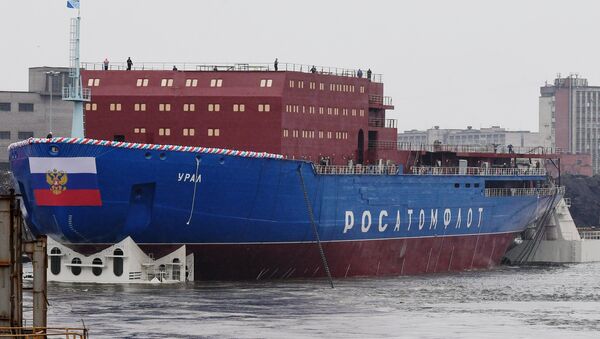Saturday saw a float-out ceremony of the Russian nuclear-powered icebreaker Ural which took place at the Baltic Shipyard in St. Petersburg.
“The Ural together with its sisters are central to our strategic project of opening the Northern Sea Route (NSR) to all-year activity," Alexey Likhachev, chief executive of the Russian state-run nuclear energy corporation Rosatom said during the ceremony.
READ MORE: Russia to Launch First-Ever Arctic Weather Satellite — Source
He referred to the two other vehicles of the same class – the Arktika (Arctic) and the Sibir (Siberia), which along with the Ural, are expected to become the most powerful icebreakers, capable of forging a path through ice up to three metres thick.
The 3rd Project 22220 nuclear-powered icebreaker, the Ural, was launched today at the Baltic Shipyards in St. Petersburg. https://t.co/3jQmVjxbFP pic.twitter.com/zpzDXbDa8t
— Rob Lee (@RALee85) 25 мая 2019 г.
Vadim Ivlev, chief designer of the nuclear-powered icebreakers of Project 22220, in turn said that the Ural will be on a par with modern cruise liners in terms of its equipment.
In a step towards year-round #NorthernSeaRoute navigability, today saw the launch of our nuclear-powered arctic #icebreaker Ural, which can cut through ice up to 3 metres thick. The vessel has 2 cutting edge RITM-200 #nuclearreactors, capable of jointly generating up to 350MW. pic.twitter.com/grEuTYS2rm
— Rosatom Global (@RosatomGlobal) 25 мая 2019 г.
The 173-meter-long icebreaker is due to be commissioned in November 2021, after the Arktika and the Sibir enter service in December 2019 and November 2020, respectively.
According to him, the goal is to significantly increase freight traffic along Russia's Arctic coast.
Moscow has repeatedly stressed that the Arctic is an area where Arctic Council member states, including Canada, Denmark, Finland, Iceland, Norway, Russia, Sweden, and the US, should work for a constructive dialogue and conflict-free partnership.



